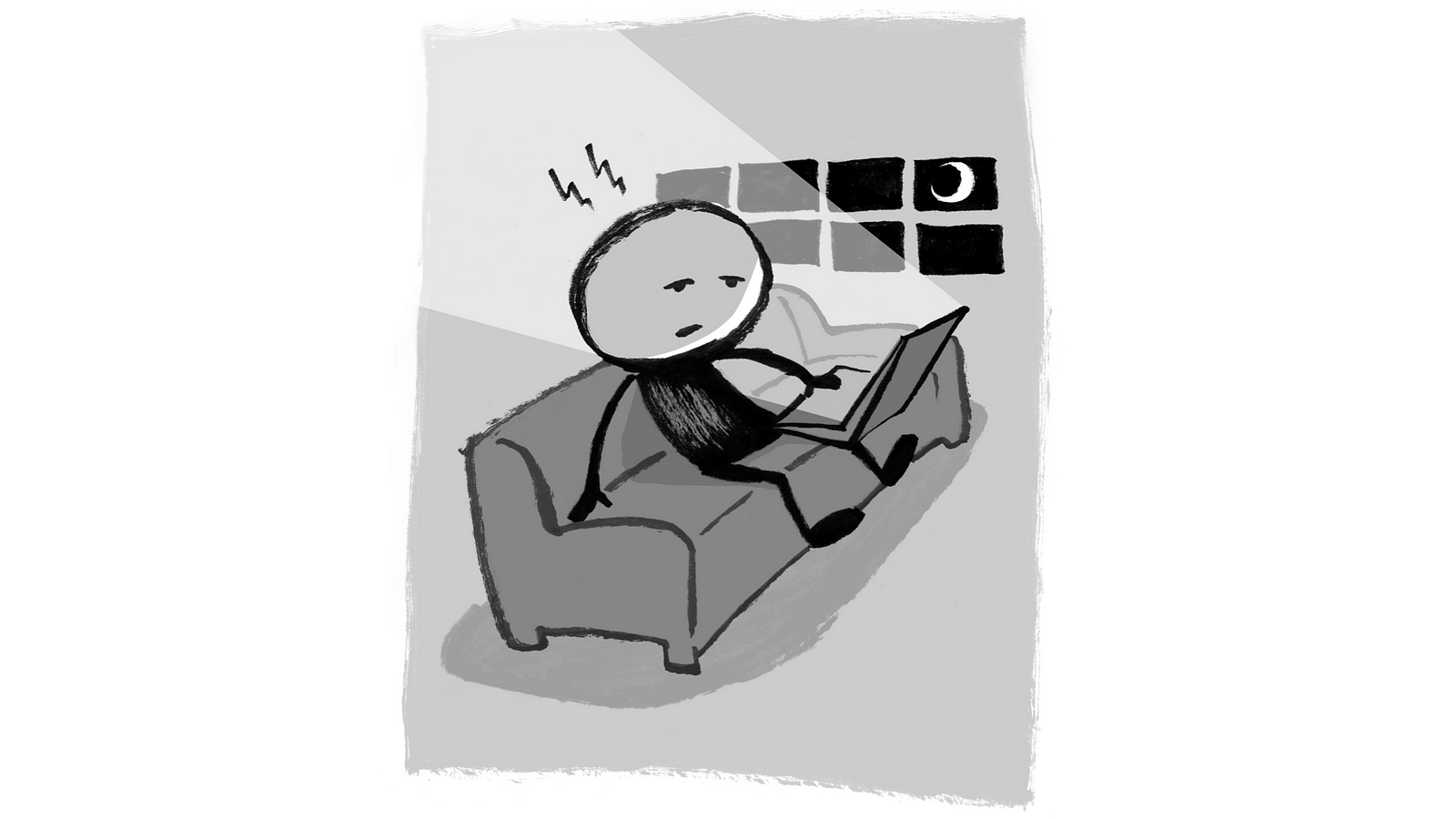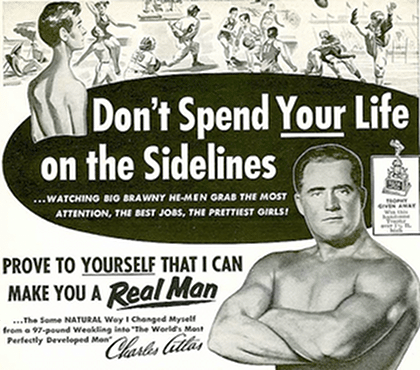
Editor’s note: This is a guest article from John Zeratsky.
You’ve got a new email from your boss, plus a dozen old ones that still require a response . . . Your friend posted photos from her visit to a coffee plantation in Costa Rica . . . What’s the stock market doing today? Everyone is saying a bear market is coming, but you can’t really predict those things . . . There’s a new iPhone out, and you heard you can unlock it with your mind . . . You just got a notification: The deputy secretary of some government agency is resigning . . . You have time for a few minutes of Fortnite, don’t you? Today you have a lot of meetings. What will you do about dinner? You should keep moving, be productive, and do the right thing . . . You read that the most successful people aren’t on Facebook and have something called grit. That sounds good. You need grit.
We live in a distracting world, and it’s not getting any better. New information crashes toward us at every moment. Technology companies work tirelessly to create products that bring convenience and delight to our days. The incentive structure hasn’t changed: usage creates data, data sells ads, ubiquity creates demand, demand sells devices. Sure, Google has Digital Wellbeing and Apple has Screen Time, and both are good things. But the bottom line is that everyone involved — from the hardware makers to the OS designers to the app creators — benefit when we use these technologies more, not less.
It’s natural to think we need more discipline, willpower, energy, stamina, focus, or grit to resist these distractions. More something, for sure.
But for most people, I don’t think willpower is the right approach. New psychology research is showing that old ideas about willpower and self-control weren’t quite right. It’s possible that we can’t build willpower and that self-control isn’t so effective, after all. What often looks like strength of resolve is really the result of an environment or mindset that makes the right decisions the easy decisions.
But if self-control is a function of circumstances, how can you change those circumstances? If willpower is a myth, how can you create an environment for good decisions that don’t require willpower? It starts with defaults.
If You Feel Busy and Distracted, It’s Not Your Fault
Every day, dozens of defaults — from preinstalled apps, to expectations of instant response, to smartphone notifications, to cultural agreements on what’s considered “normal” — shape how we spend our time. Our willing acceptance of distracting apps and our culture of constant busyness show just how normal these things have become. Defaults seem inevitable after the fact, but they weren’t assembled according to a grand plan. Modern life is not a utopia designed by some genius — it’s just a collection of defaults that have stuck over the years.

So if you constantly feel busy and distracted, it’s not your fault. But there is something you can do about it: You can change the defaults of distraction and busyness by reconfiguring your technology.
Let’s get real: If you want to reclaim control of your time, it’s your responsibility. No digital wellbeing feature or anti-technology manifesto is going to undo these defaults. And nobody cares more about your time than you do. Don’t get me wrong: I’m glad that Google, Apple, and Facebook are designing tools to help us form healthier relationships with their products. I’m happy that writers like Tristan Harris and Adam Alter are pulling back the curtains on the tech industry and pushing these companies to do better.
But you can’t wait for tech companies to give you back your time. It’s on you.
Since you’re reading this article, you probably feel like you should get better about distraction and focus. You probably recognize the sensation that rises after a mindless Instagram session or a where-did-the-day-go evening reflection. Maybe it feels like regret. Maybe it feels like fire. But if you feel it, harness that energy. Don’t wait. Make the changes now.
How to Create Barriers to Distraction
What I’m about to suggest is simple but not easy. It requires a burst of effort, but once you reconfigure your devices and apps, you don’t have to constantly resist the distractions. You won’t feel that nagging pull to do a quick Twitter check, because you can’t. You won’t wonder whether you have any new emails, because you can’t find out. The key is creating barriers to distraction.
Here are three things you can try now — three tactics that take willpower and self-control out of the equation:
1. Remove Distracting Apps (On Your Phone)
This is the simplest, most effective way to reclaim time and attention from your smartphone. In contrast to hacks like selectively disabling notifications, rearranging your homescreen, customizing sounds and vibrations, or putting your phone into “Airplane” or “Do Not Disturb” mode, removing apps gets to the core of the problem. It cuts off distraction where it starts. And it makes the hacks obsolete: You won’t have to worry about notifications or airplane mode or hiding your distracting apps if they’re not installed in the first place.
If removing apps is so effective and so simple, why don’t more people do it? Maybe we fear the anticipated pain of making hard choices, so we look for shortcuts that feel productive (like an elaborate form of procrastination). Maybe we worry about removing a certain app because we use it for work, or because we’ll fall out of touch with friends, or because everyone else is using it. But we forget that defaults feel more permanent than they really are; that the app store is still just one tap away and friction-free as ever; and that we can still use Twitter and check email and read the news, but we can do it on our terms.
Besides, I’m not proposing monastic vows of tech abstinence — just an experiment with a distraction-free phone.
After removing these apps, you might find that your feelings of FOMO are replaced with new feelings of calm and control over your time. You might realize that seeing your friends’ photos on Facebook is not the same as keeping in touch with them. And you might discover that being less responsive actually makes you a more valuable colleague, because you can spend more time on the work that matters to your team.
2. Log Out and Change Passwords (On Your Computer)
Removing Infinity Pool apps (those that suck you in with their capacity for endless surfing/scrolling/refreshing) from your smartphone is a big step toward reclaiming your time and attention. But you might find that the empty address bar of your computer’s web browser is just as hard to resist. It’s right there every time you wake your computer: a magical portal to the infinite possibilities of the Internet.
How can we make time for what matters when the alternative is infinite entertainment and education? Once again, the key is creating barriers to distraction; but on the computer, it’s not quite as easy as deleting a few apps.
Here’s what works for me:
- First, I changed my passwords for Twitter, Facebook, and LinkedIn (my top distractions on the computer).
- I chose new passwords that were random and impossible to remember. For example, m6a$78Hg. (Don’t get excited; that’s not really one of my passwords.)
- I put those passwords in a password manager app. I like 1Password, but there are others.
- I logged out of each and every Infinity Pool website.
- I removed all bookmarks and shortcuts to these sites from my browser.
These simple tweaks create speed bumps on the road to mindlessly checking one of these Infinity Pools. Let’s say I semi-unconsciously “decide” to check Twitter. (This happens multiple times a day.) Because I no longer have a link in my bookmark bar, I have to type in twitter.com. But when I hit return and the login screen appears instead of the feed, I’m reminded to pause and consider what I’m doing: Am I checking Twitter on purpose, or by default? Do I have something to do — like see if anyone posted a question about my book — or am I just looking for a break?
The answers to these questions are not always clear, and goodness knows I don’t always make the right decisions. (“Right” being the decisions I know I want myself to make. I’m not talking about some universal judgment of what’s right and wrong here.)

When I’m finished using one of these sites, I log out again, resetting the barriers to distraction. I’ll admit: That final log-out does require a small amount of ongoing discipline. But this habit is easier to maintain than most, because I can harness the feelings of guilt and annoyance that typically accompany the end of a session with one of these apps. It goes something like this: Hmm, do I really want to look at Twitter? Yeah, okay, there’s something I need to do. . . 30 minutes later . . . Ugh, I spent half an hour on Twitter! I gotta do something else. I should log out so this doesn’t happen again. Click!
The friction introduced by having to stop, consider, grab the password, copy, paste, and sign in does me good. It forces me to make a decision about how I’m spending my time, instead of mindlessly reacting to defaults.
3. Get Proactive With Your Time
This defensive perspective — creating barriers and habits to defeat distraction — is essential for reclaiming time and attention, but an emphasis on defense can feel like drudgery. It’s like eating healthy or saving money: both are necessary but can feel like chores (or worse, like deprivation) unless balanced by an awareness of why we’re adopting those behaviors.
Similarly, when it comes to how we spend our time, we need more than defense — we need to think proactively about what we’re making time for.
The best way I’ve found to maintain a proactive mindset is with the daily practice of choosing a “Highlight” — a rewarding focal point and priority your day. Try asking yourself the question: When I look back on my day, what do I want the Highlight to be? Maybe it’s an accomplishment at work. Maybe it’s a project you’ve been meaning to do at home. Or maybe it’s an activity that brings you joy — a long walk, a board game, or cooking a meal from scratch.
Thinking about what you’re making time for can create the motivation to set new habits into motion. And when your habits fall apart and things don’t go as planned, the daily presence of your Highlight becomes a beacon, reminding you of the decisions you made and the plans you set — and giving you a boost to get back on track.
A daily Highlight can also be the saving grace of an otherwise “blah” day. When you’ve chosen a Highlight, and planned your day to make time for it, you can mark a “win” even if the rest of the day kind of sucks.
That’s one of the reasons I love to work on my Highlight first thing in the morning: When I make time for something important right after waking up, the rest of the day is gravy. A traffic jam, a delayed train, a meeting that runs late, an outdoor workout that’s rained out — these things are a drag, for sure, but when I’ve already made time for my Highlight, I can grab a slice of satisfaction from even the most unsatisfactory of days.
The power of a Highlight to rescue a day is critical to the attitude of self-forgiveness that I talked about at the beginning of this story. See, you’ll never be perfectly free of distraction. Your days will never be perfectly planned. And while it’s not your fault that you live in a world of endless busyness and distraction, you can do something about it. You can adjust the defaults of this world. You can create an environment that supports and enables the kinds of decisions you want to make about your time.
If you’re intentional about your decisions, yet forgiving when things don’t go according to plan, you can change your life. You have to start sometime. Why not today?
Be sure to listen to our podcast with John:
______________
John Zeratsky is obsessed with the idea of redesigning time. He’s the author of Sprint and Make Time.
All illustrations by Jake Knapp and taken from Make Time.







